3D Printed Tactile Games at Maryville Middle School
In today’s blog, we have our amazing pioneer, Becky Wynne, joining us to talk about a recent PrintLab project she delivered. The project was based around designing tactile games for people with visual impairments. Let’s dive straight into the interview!
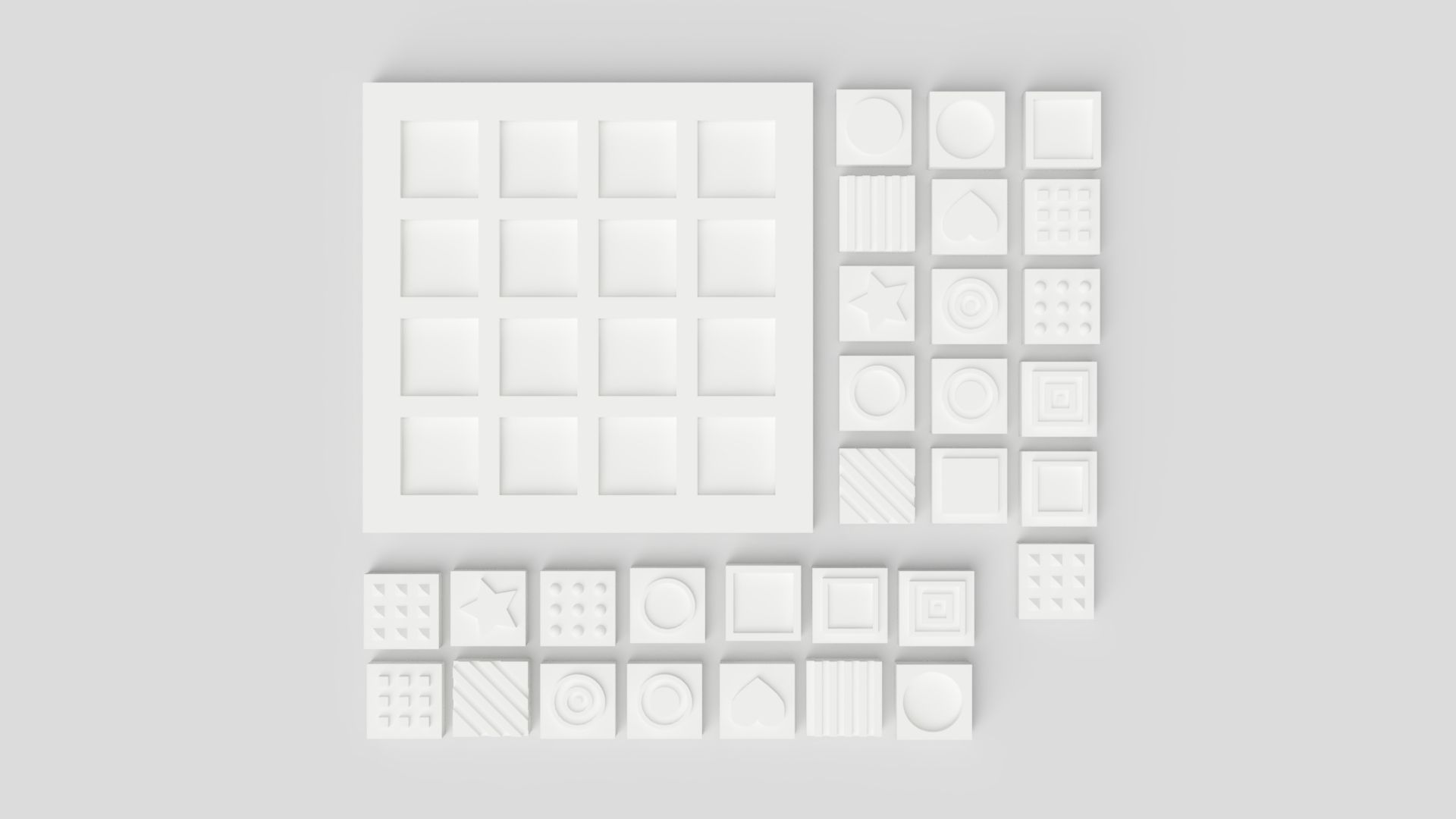
7th August 2023 • Case Studies
Hi Becky! Thanks for taking the time to talk to us today about the tactile games project you recently delivered. First of all, can you tell people who you are, what you teach and where 3D printing fits into your role?
Hello! I am Becky Wynne and I am a STEM/Project Lead the Way teacher at a 5th – 8th grade middle school. I teach a general STEM class in 5th grade, which includes an introduction to 3D printing with Tinkercad, physical computing with the micro:bit in 6th grade, engineering in 7th grade with a little deeper dive into 3D printing to solve problems, and automation & robotics in 8th grade. While I specifically incorporate 3D printing into my 5th and 7th grade curriculum, students are able to include 3D printed artifacts in their projects at other grade levels.

Which class participated in the tactile games project and how did it fit in with your curriculum?
My 7th grade students participated in the tactile games project, and it provided the perfect framework for students to learn/utilize the engineering design process.
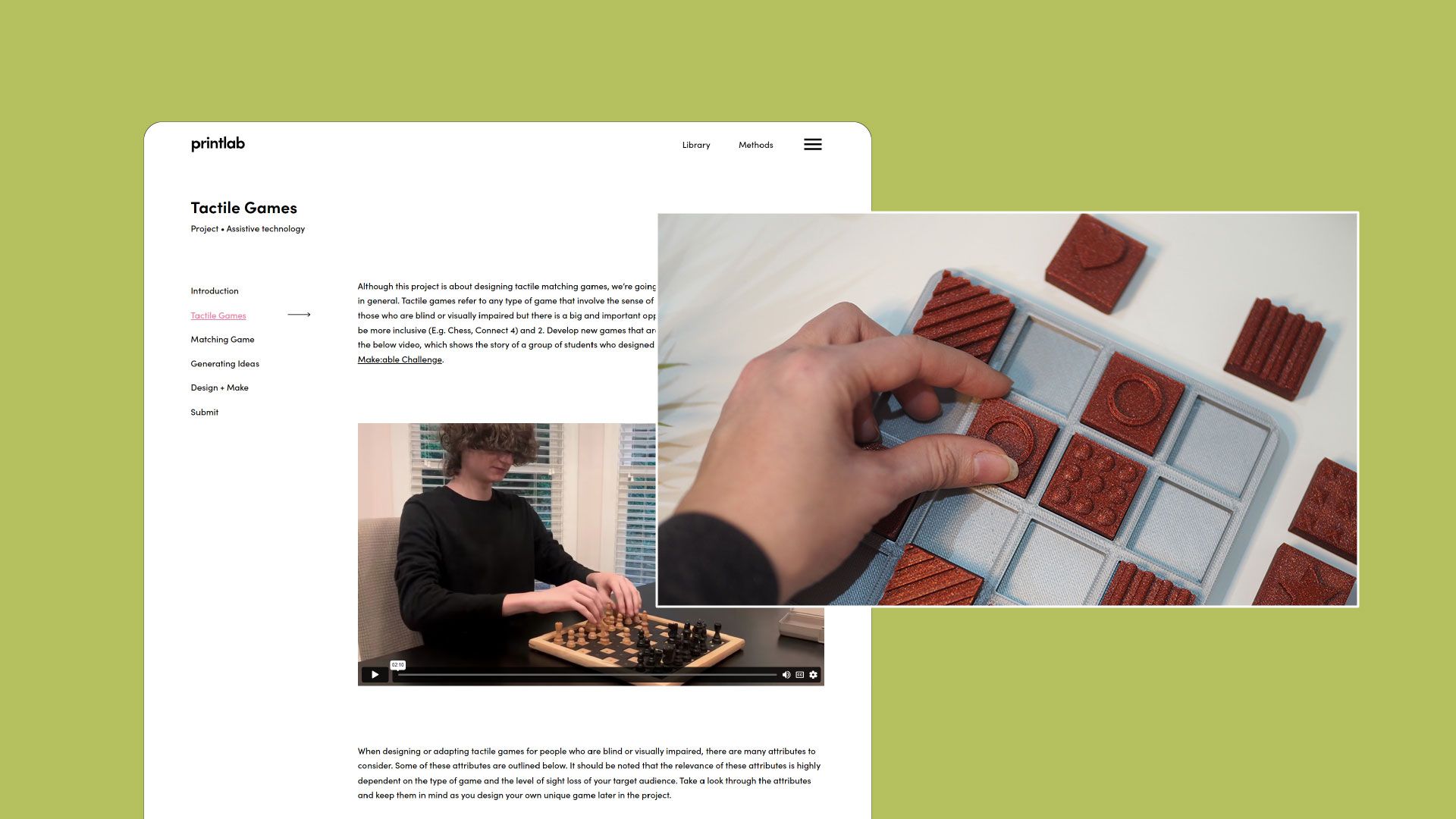
Can you explain the process students went through during the project?
I kicked off this project by discussing the types of games students like to play with their friends and families. Then I asked them to consider what, if any, modifications would need to be made to the game in order to play with a new friend who was visually impaired. I showed a short video showing the daily routine of a blind child to help foster empathy for their new friend, we wore blindfolds and played Tactile Pictionary, we played the tactile matching game provided with PrintLab’s Tactile Games lesson, we played Braille Uno, Tactile Checkers, and we learned to read and write in Braille.
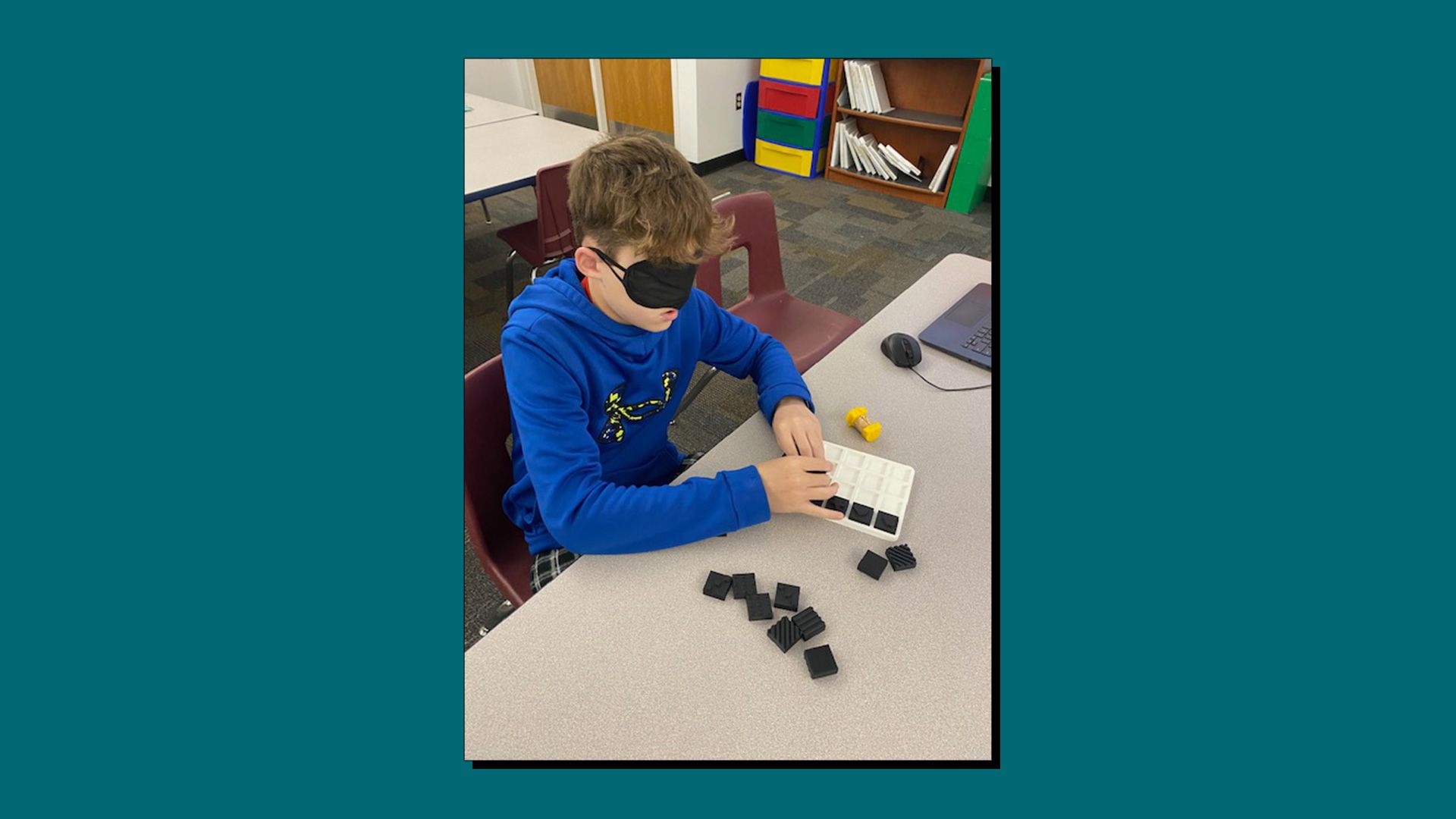
Students used what they learned through that process to come up with some criteria/constraints for their game, they made sketches, designed their games in Tinkercad to be 3D printed or laser cut, they tested their designs while wearing blindfolds, and made modifications until their game functioned the way it was intended.
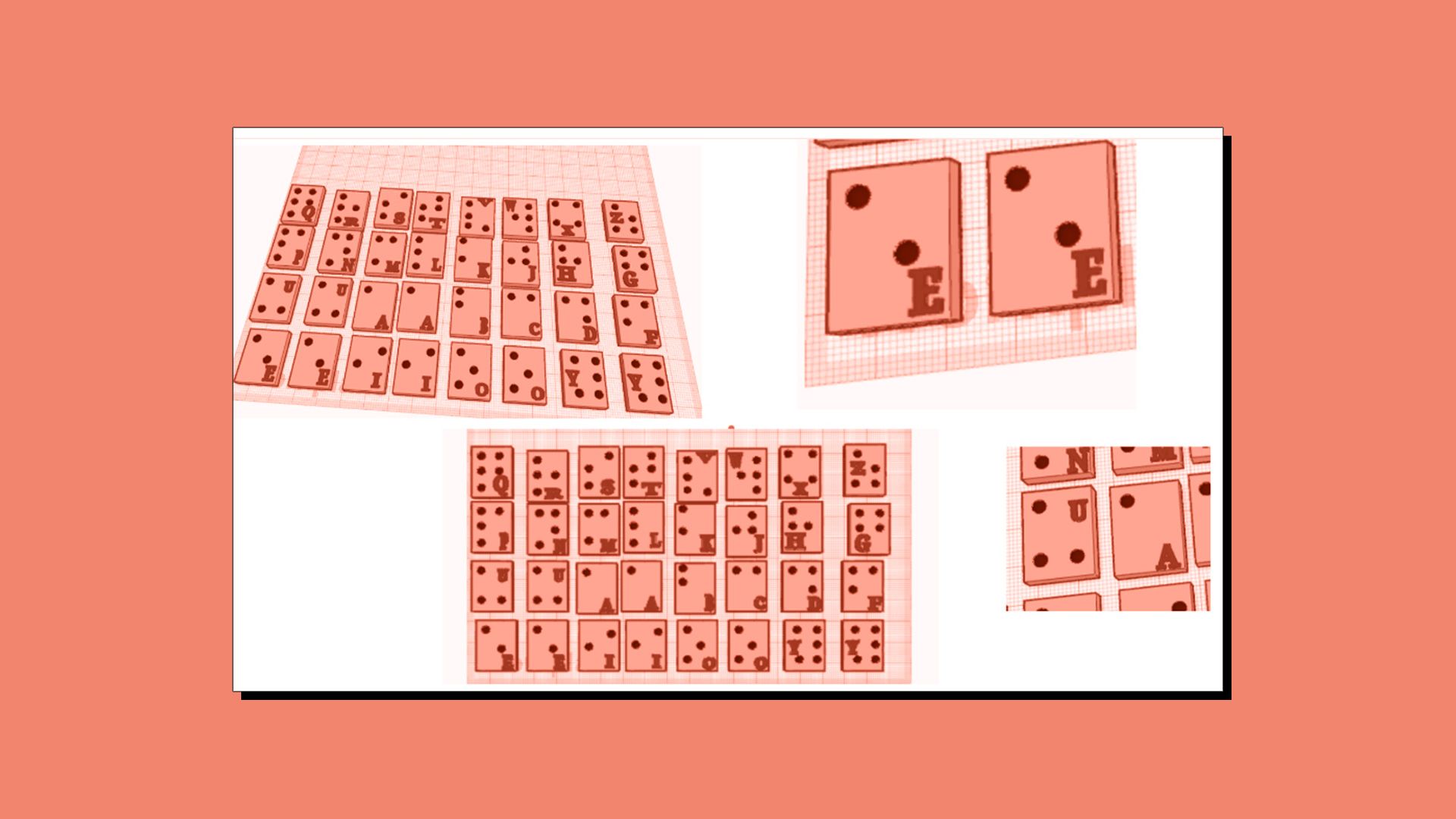
At that point they created an audio file of the instructions, or wrote the instructions out in Braille. Teams presented their process, which they had documented in Seesaw, to the rest of the class and then students were able to play each other’s games.
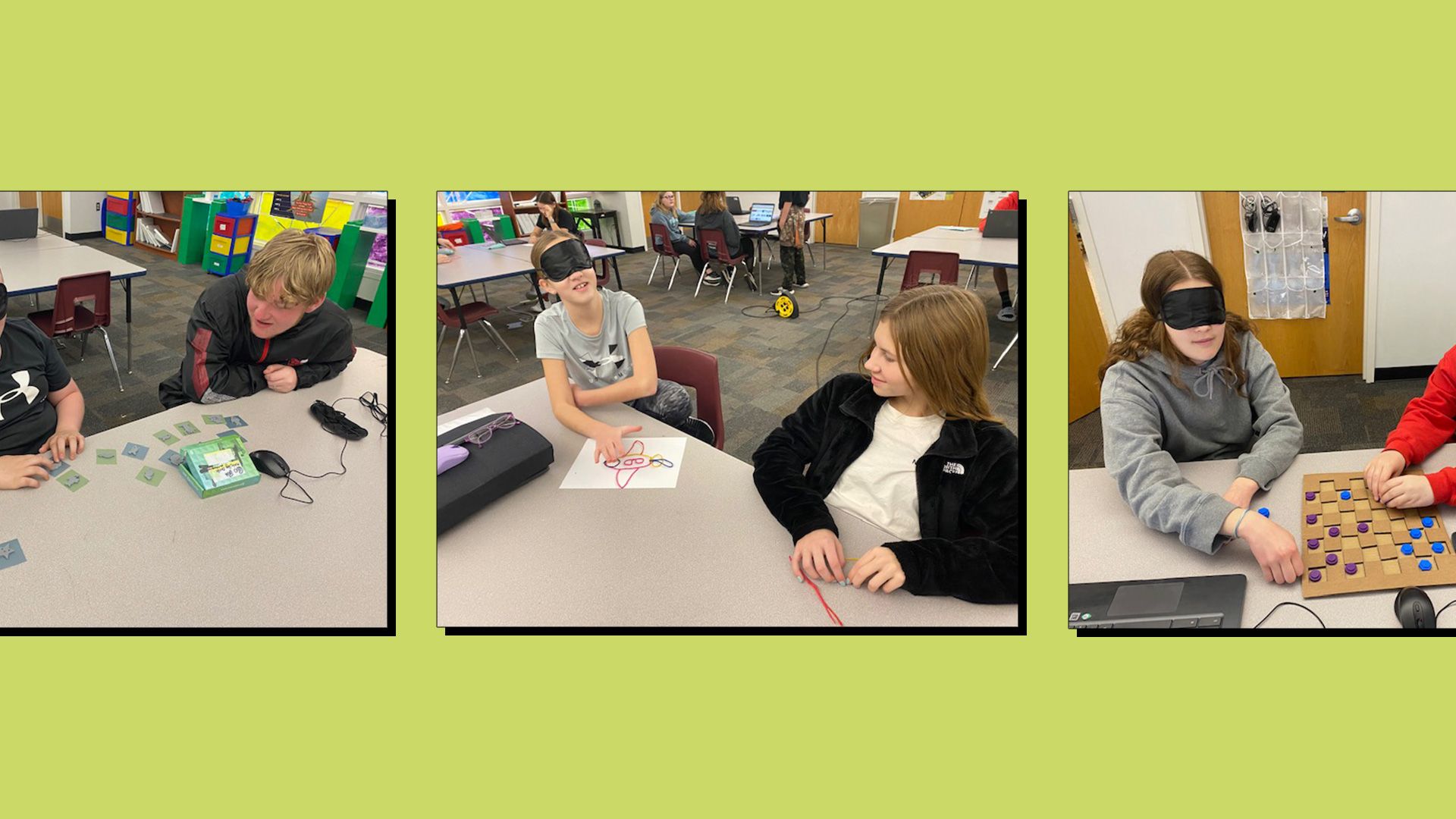
It was fantastic to see students using simulation activities to develop empathy for people with visual impairments. How important was this step?
In my opinion, fostering empathy for the end user is the most important part of the process. We have a visually impaired student joining the middle school next year, so students were very thoughtful about the types of games that should be modified for use at school.
What types of games did students create?
Students created modified versions of several games we currently have at school, for example, Checkers, Chess, Connect 4, Memory Match, Scrabble, and Qwirkle.
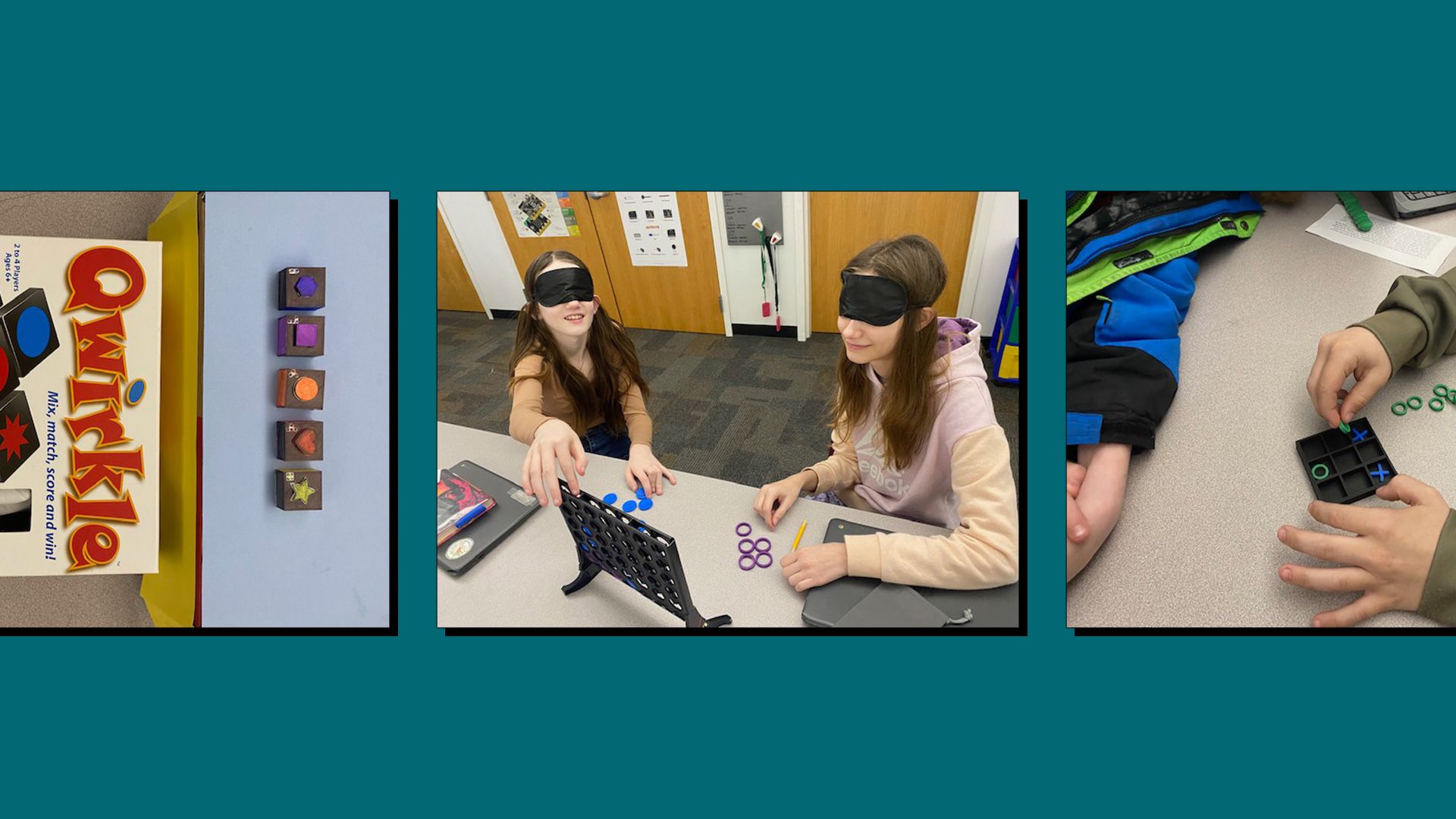
We understand that one of the biggest challenges with 3D printing in education is to design models that are ‘3D printable’, which is why you also integrated our ‘Designing for 3D Printing’ module into the project. How did this help students?
I believe that the Designing for 3D Printing module will help me tremendously the next time I teach this lesson. The first time I taught the lesson, I encouraged students to work through the module in their down time, the next time I teach the lesson I will require them to complete the module before they start designing in Tinkercad. Making sure students pay extreme attention to detail is something that I will push for in the future so their designs will be printed with fewer revisions from me.
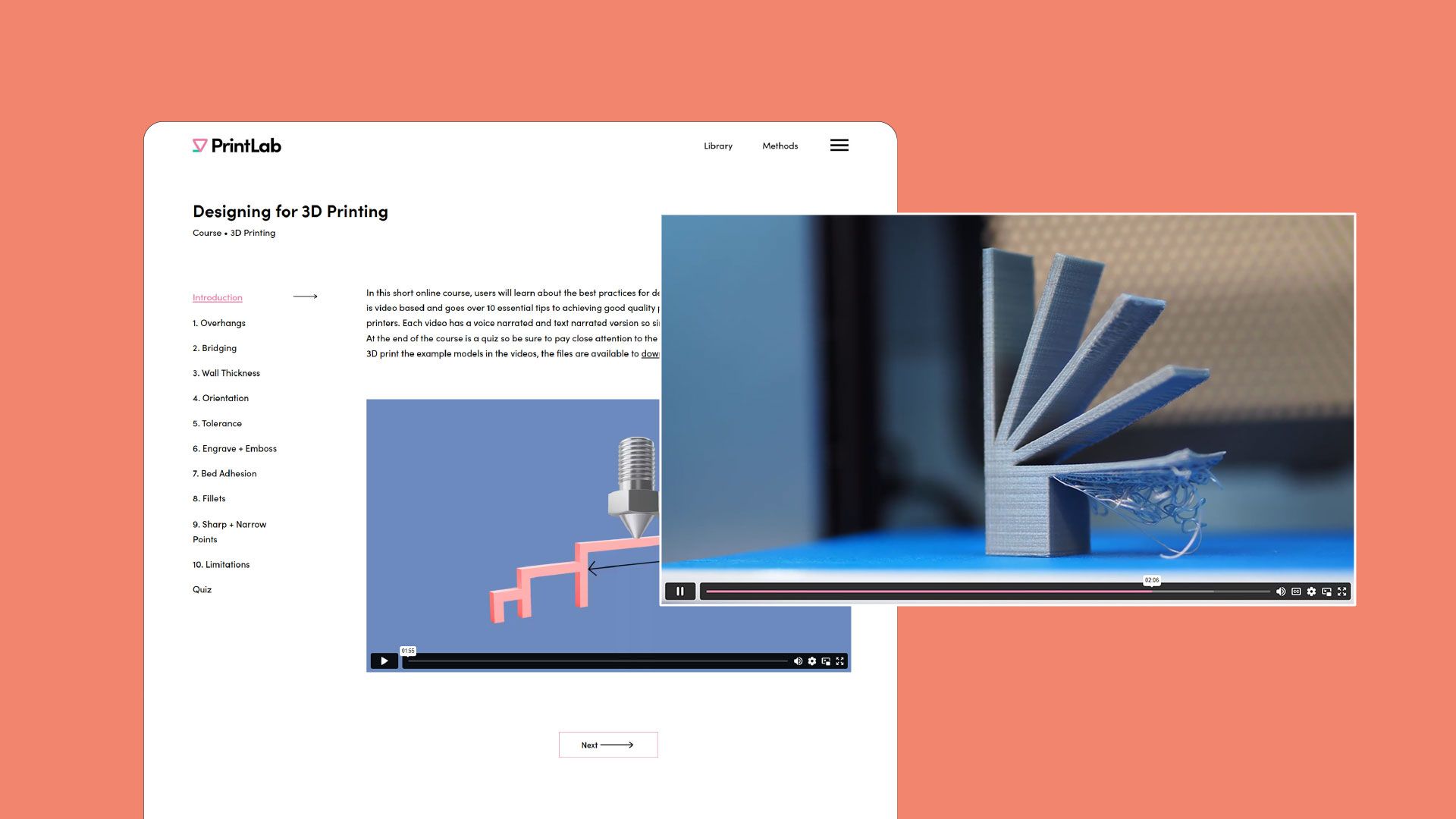
Finally, how was your experience as a teacher? Would you do anything differently if you were to run the project again?
As with all of the PrintLab projects I have used, the materials provided are outstanding and the experience was successful. The only thing I would do differently, is change how I implement the materials. Getting students to understand that taking the time to work through the tutorials and learning how to correctly design for 3D printing will save them a tremendous amount of time and materials in the long run, will be my focus.
—
A huge thank you to Becky and her students for sharing their experience with us. The Tactile Games project is one of our most popular resources and is a great way to prepare students for the Make:able Assistive Technology Challenge.
If you’d like to take a look at the project materials, check out the free trial to PrintLab.